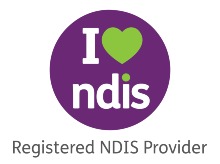Did you know?
Hear Ye, Hear Ye
Ear trumpets were early human's first attempt at coping with hearing problems. In pre-historic times, ear trumpets were simply hollowed-out horns of cows or rams. Later versions in wood and metal followed the same general contours as the natural horns. In later centuries, we continued to refine trumpets, experimenting with the acoustical properties of materials such as silver, shell, horn, artificial tortoise shell and more recently plastic.

In the 18th and 19th Centuries, it was common to fashion ear trumpets from metal covered with vulcanite (hard rubber), or from brass, and then paint them black. In either case, it was hoped that the black finish would make the hearing trumpet less conspicuous against dark clothing worn by the user.
Wax Lyrical
Cerumen, commonly known as earwax, is genetically determined and has been used by anthropologists to track human migratory patterns.
Kissing may cause a hearing loss
Reiter’s Ear Kissing Syndrome (REKS) states that kissing on the aperture of the ear may create significant negative pressure at such a speed that it can damage the stapedial ligament, which connects the stapedial muscle to the stapes, and cause a tsunami of sorts in the inner ear fluids, damaging the delicate outer hair cells permanently. Affected people can suffer high frequency hearing loss, tinnitus and distortion of sound.
Dr Reiter’s recommendation is not to stop kissing, but be aware of REKS especially in newborns as they have very small ear canals.

Fun Facts about Hearing
- Hearing is the first sense to develop in a foetus, starting at around week 16 of pregnancy.
- The human ear can distinguish sounds in the frequency range of 20 Hz to 20,000 Hz.
- Our ears adjust to changes in ambient noise levels to maintain an optimal level of hearing, a process known as "automated gain control."
- Humans can locate the source of a sound in milliseconds by using differences in sound arrival time and intensity between our two ears.
- Some animals have much better hearing than humans, such as dogs, who can hear sounds up to 45,000 Hz, and bats, who use echolocation to navigate and hunt.
- Our ears are capable of unconsciously filtering out background noise and focusing on the sounds we want to hear, a process known as "selective attention."
- The longest recorded episode of tinnitus, a ringing or buzzing in the ears, lasted for over 40 years.
- The inner ear contains the cochlea, a spiral-shaped organ that converts sound waves into electrical signals that the brain can understand.
- Our ears are designed to withstand high pressure differences, such as when diving underwater or flying in an airplane, to protect our hearing.
- Yawning can help to equalize the pressure in our middle ear, which can help to alleviate ear pain during changes in altitude.
- Sound travels faster in water than in air, which is why underwater sounds are louder and more intense.
- The ear is involved in the regulation of balance, through the vestibular system located in the inner ear.
- Our sense of hearing can decline gradually over time, a process known as presbycusis, which is a common form of age-related hearing loss.
Hearing Aids Fit for a Prince
Presented with a pair of ear defenders for his ninetieth birthday the Duke of Edinburgh joked: “Can you get Radio 3 on this?’’
One can only imagine, then, the scene when Prince Philip, now 93, was fitted with the pair of hearing aids that he wore for the first time in public on Tuesday.
Although particularly discreet, the devices, which are available through the NHS, could be seen in the form of two thin wires inserted into the Duke's ears at a reception in Buckingham Palace.
Royal observers pointed out that the Duke’s need for hearing assistance was unsurprising at his age, particularly because he still makes regular appearances at events where he engages in conversation with dignitaries, politicians and members of the public. Tuesday’s reception, to which he accompanied the Queen, was held to honour recipients of the Victoria Cross and George Cross and their families.
“He has done remarkably well to be doing what he does for so long and not need them,” said Joe Little, managing editor of Majesty magazine.
“Over the years it has been apparent when he has been out with the Queen that he has not been fully au fait with things going on around him and she has had to tell him. I think his hearing has been impaired for some time so it is just a way of improving his quality of life.”
A Royal spokesman declined to comment, on the grounds that the Duke’s hearing aids are a medical matter. However, Gemma Twitchen, senior audiologist at Action on Hearing Loss, formerly the RNID and of which the Duke was patron until last year, said the hearing aids were likely to be one of two kinds of device - both of which are available through the NHS.
She said the device worn by the Duke could be one of two types of “behind the ear” devices: an “open fit” hearing aid, which has a small earpiece at the tip of the tubing inserted into the ear instead of a traditional mould, or a “receiver in the ear” device which has a small loudspeaker in the part inserted into the ear.
The wires on the Duke’s hearing aids appear particularly thin, making them harder to notice.
But Ms Twitchen added: “People might be surprised that you can get the smaller tubes on the NHS for free, but hearing aids have come on a long way in terms of technology and how they feel and fit in the ear.”
Source: The Telegraph, www.telegraph.co.uk/news/uknews/prince-philip/11192748/Duke-of-Edinburgh-seen-wearing-hearing-aids-for-first-time.html
























